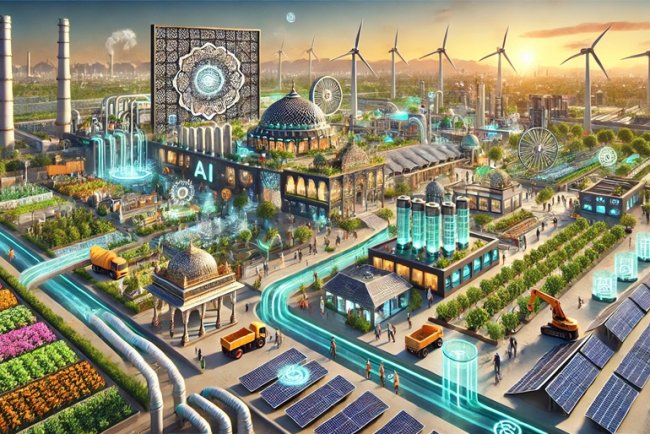Lessons From Global Energy Disruptions: What India Must Prepare For
Enhancement of the grid by means of public-private partnerships will be expanded to financially support and deploy this grid-enhancing technology, writes the author

The world more and more depends on never-ending energy supply, but the recent global blackouts and the disturbances of the supply have shone light on the underlying weaknesses. On April 28, 2025, there was a massive outage problem in the Iberian Peninsula between Spain and Portugal leaving millions of people in these two countries without power. With an unexpected sequence of generator trips in southern Spain, the initiation of the blackout went deep into the other regions as the frequency of the grid was falling, leading to a total disconnection from the European power network. For nearly ten hours, hospitals, rail networks, air traffic, and homes were affected.
Emergency power imports from France and Morocco helped restore supply, but the incident raised serious concerns about the reliability of power infrastructure even in advanced economies. According to ENTSO-E, the event highlighted instability in the protection systems and a lack of sufficient grid flexibility (source).
On June 10, 2025, La Palma experienced its second serious power outage in a month. A power plant in its twilight suffered a fallacy of a turbine which interrupted supply of energy to over 50,000 households. Local authorities remarked on the lack of appropriate modernization of the infrastructure over the last decades, and stated that this incident was really revealing the risks of outdated systems at a time when electricity demand increases.
India is equally making its own headlines with respect to energy expansion. On June 10, 2025, the Ministry of Power made an announcement that it has extended its waiver on inter-state transmission charges for energy storage projects till June 2028. This effort aims to augment pumped hydro and battery projects across the country. India also saw a record high in renewable power generation in May 2025, generating 24.7 billion kilowatt-hours and propelling renewable energy to make over 15 percent of the country's power mix. These gains position India well, but they also highlight the need to address vulnerabilities before they become future crises (source).
Global Events Reveal Fragility in Energy Infrastructure
The Iberian blackout is among the most visible signs in 2025 that global energy systems are under strain. Europe's robust electrical network and substantial renewable energy integration failed to prevent the blackout which demonstrated the rapid onset of systemic failures. During the failure, Spain's solar power generation reached nearly 59 percent of electricity supply but proved inadequate to avert the impending collapse triggered by frequency declines. Weak interconnections with neighboring countries made the recovery slow and less effective.
Earlier this year, a 500 kV line fault triggered entire country blackout in Chile, affecting more than 90 percent of the population. Emergency protocols were activated, although it illustrates flaws in protection systems and the lack of redundancy in transmission design. Although happening in different territories and decorum of regulations, these events show a universal issue. Modern grids are getting more complex, but not more resilient.
Rolling blackouts occurred in Iran again in the cold winter of 2024 and early 2025. Gas shortages coupled with generating capacities that were insufficient forced the authorities to schedule outages at various provinces. The blackouts impacted public services, businesses, and security on the roads due to failed traffic systems. Together, all these are examples stating that no country can afford to ignore infrastructure soundness, energy diversification, and emergency preparedness.
India's Energy Landscape in 2025
India's energy transition advancements stand out as remarkable, yet they bring distinct challenges that accompany its progress. The country today ranks among the top solar energy producers and is also a large contributor toward renewable capacity. In May 2025, India set a record, generating 24.7 billion kilowatt-hours of renewable energy, which is a whopping 17 percent year-on-year increase. Such achievements speak of solid policy support, good financing opportunities, and increasing participation by the private sector.
The government's recent intervention to extend waivers on inter-state transmission charges concerning storage projects up to June 2028 is expected to fast-track the investments enveloping grid stability solutions, which include both battery and pumped hydro storage, essential for managing solar and wind power intermittency. However, these gains are centered in certain states, such as Rajasthan, Gujarat, and Tamil Nadu. The biggest challenge here is, however, transmission. Due to a lack of infrastructure, most of the clean energy generated cannot reach the demand centers.
Another thing considered is an unprecedented increase in electricity demand in the country. The summer of 2025 is now expected to break all records of energy consumption as air conditioners draw increasing amounts of electricity and industries keep expanding. This upward trend expects to exert more pressure on an already overstrained distribution system. The frequent power failures in Ludhiana and various regions of Uttar Pradesh severely disrupt manufacturers' daily activities and output. The expansion of renewable energy sources demands effective management of peak loads and grid reliability to sustain growth.
Lessons India Must Learn from Global Disruptions
India will be able to learn huge lessons from these global energy disasters of recent times. First amongst them is the urgent need to modernize infrastructure. The case of La Palma serves as an example of what happens when outdated systems are put under pressure and fail. The pressing need of the hour for India is to upgrade the old substations, distribution lines, and protection equipment, especially in already densely populated and high-demand regions.
Second, grid flexibility must become a central planning objective. Unlike fossil-based grids that offer stable base load, renewables introduce variability. Events in Spain and Chile show that a high share of renewables without adequate storage or grid support can backfire. The energy storage focus in India is positive, but needs faster and larger deployment to meet burgeoning demand.
Thirdly, India must embed redundancy within its grid architecture. Backup systems, alternative routes, and smart automation can keep local disruptions from being converted into nationwide blackouts. Such precautions become even more critical in a country like India, with different regional consumption patterns and varying weather conditions.
They need to pay serious heed to cybersecurity and system monitoring. Worldwide, there have been many grid failures that have called into question protection system misfires and further, the adequacy of surveillance. India must invest in smart grid technologies, do regular stress-testing, and prepare itself for both technical and cyberthreats that may compromise energy security.
A Roadmap to Resilient Energy Security
As the transition of India's energy system gains increased momentum, it `now` has to consider resilience as a major goal in energy planning, which necessarily includes aligning policy incentives for long-term health of infrastructure and providing their grid operators with the tools to enhance capacity building, treating storage as a national asset rather than a luxury.
Enhancement of the grid by means of public-private partnerships will be expanded to financially support and deploy this grid-enhancing technology. Local and state coordination will have to grow firmness and alignment to increasingly regional issues before they escalate. Institutions like the Central Electricity Authority and state DISCOMs have to synchronize and be accountable for their actions affecting reliability.
Demand-side management has another area that India must promote. Encouragement of efficient electricity consumption in peak hours; installation of smart meters; and incentives to industrialists for load balancing can soothe the pressure on the grid. In a wider sense, energy security is, today, not just synonymous with capacity to generate energy. It is about being fast to respond to disruption, mindful to prevent them, and wise to govern smooth transition. India has to be able to learn these lessons to take lead-not only in energy expansion but in the development of one of the most resilient and future-ready power systems the world has ever seen.
Views are personal
What's Your Reaction?
















